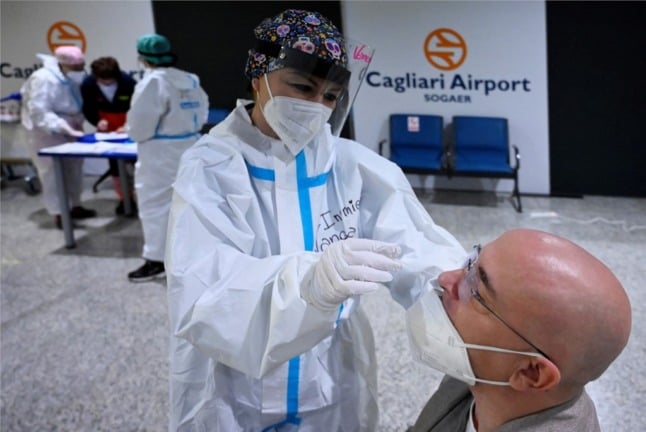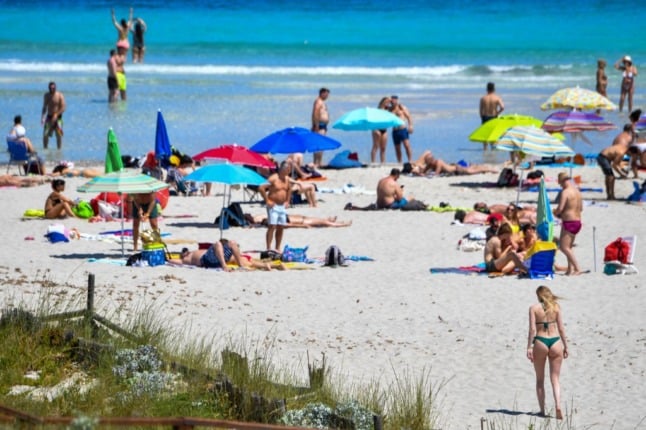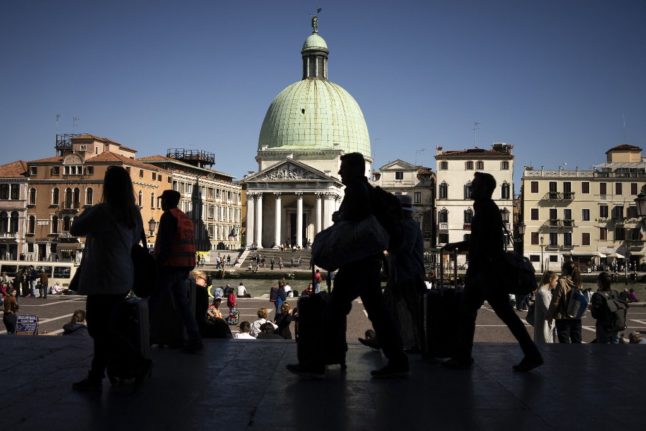Sardinia’s regional authorities are reportedly planning to issue a new ordinance that will make coronavirus tests mandatory once more at the island’s airports and ferry terminals, after the neighbouring island of Sicily introduced testing for travellers from certain high-risk EU countries and as the national government considers requiring a Covid-19 ‘green pass’ for travel and events nationwide.
The requirement would be separate to Italy’s national travel rules that allow people from the European Union and certain other countries to enter freely if they have been vaccinated, recovered from Covid-19 or tested negative shortly before their departure, and would mean that travellers face a test on arrival even if they have an EU ‘green pass’ or equivalent.
Multiple local outbreaks have pushed Sardinia’s incidence rate to the highest in Italy, according to early figures from the national weekly health report, which is due to be published in full later on Friday.
READ ALSO: Four regions in Italy at risk of new restrictions as coronavirus cases rise
Over the seven days to July 11th, Sardinia recorded 33.2 new cases per 100,000 inhabitants, according to a preview of the data published by news agency Ansa. Only one other region had an incidence rate over 30: Sicily with 31.8.
Sicily, which like Sardinia is a popular summer destination for both domestic and international tourists, has already made Covid tests compulsory for travellers arriving from Spain, Portugal or Malta.
“It would be wise to reinstate checks for people arriving in Sardinia from overseas,” the leaders of the island’s association of doctors said in a joint statement quoted by La Stampa. “Carrying out a molecular swab after arrival would be an important step that could help identify possible cases of the Delta variant and other less-known strains that are circulating.”
Another wave of coronavirus infections, like the one seen on Sardinia last summer, would be devastating for the island’s economy after months of restrictions and closures, the doctors warned.

Sardinia is one of six parts of Italy where the transmission number (Rt) has climbed above 1, along with Abruzzo, Campania, Liguria, Veneto and the autonomous province of Bolzano.
Since dropping most Covid restrictions in May, the island has seen daily new infections rise from the single figures in late June to more than 100 for the past two days.
At the same time deaths have remained close to zero, with only two total in the past week. Currently 42 Covid-19 patients are in hospital in Sardinia and three are in intensive care, according to the latest daily figures.
Most of the new cases have been reported around Cagliari, in the south of the island, and Sassari in the north-west. Local clusters have prompted at least two towns – Serrenti near Cagliari and Usini near Sassari – to reimpose curfew and other restrictions, closing bars and restaurants at 11pm and cancelling concerts and parties, even outdoors.
READ ALSO:
- Is Italy planning to follow France in requiring a Covid ‘green pass’ for bars, restaurants, and events?
- Delta variant in Italy will be ‘prevalent within 10 days’: health official
- Covid-19: How many people in Italy still aren’t vaccinated?
At least four other regions of Italy are understood to be at risk of returning to tougher Covid restrictions as infection rates rise, fuelled by the spread of the highly transmissable Delta variant.
This week’s figures indicate that 19 of Italy’s regions and autonomous provinces are now in the moderate risk category, with only Valle D’Aosta and the province of Trento classed low risk.
No parts of Italy have yet crossed the threshold that would trigger a return to “yellow zone” restrictions, however, with admissions to hospital and intensive care units remaining low.
With the Delta variant spreading chiefly among unvaccinated people, the Italian government is understood to be considering expanding the use of the EU Covid-19 health pass, currently required chiefly for international travel, to train journeys and flights within Italy too.
At the moment the certificate – which you can claim after getting vaccinated, testing negative for coronavirus or recovering from Covid-19 – is only required to avoid quarantine upon arrival in Italy, to visit care homes or attend certain large events.



 Please whitelist us to continue reading.
Please whitelist us to continue reading.
“…with admissions to hospitals and ICUs remaining low.” EXACTLY. From the very beginning of this nightmare, it was always about overwhelming hospitals. If the hospitalization rate remains low, then why return to house arrest status? It will be the last nail in the coffin for so many businesses and for Italy’s economy which is already in ICU.